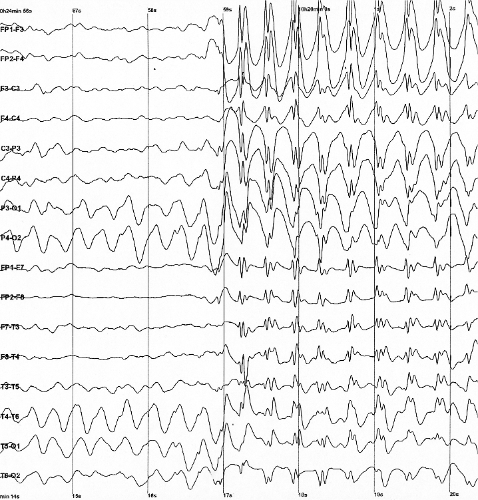Lennox-Gastaut Syndrome

A rare syndrome that belongs to the group of severe childhood epileptic encephalopathies.
Epidemiology
Incidence is estimated at 1:1,000,000 inhabitants per year, and the estimated prevalence is 15/100,000. Lennox-Gastaut syndrome (LGS) represents 5-10% of epileptic patients, and 1-2% of all childhood epilepsies.
Clinical description
This disorder is defined as a cryptogenic or symptomatic generalized epilepsy, which is characterized by the following symptomatic triad: several epileptic seizures (atypical absences, axial tonic seizures and sudden atonic or myoclonic falls); diffuse slow interictal spike wave in the waking electroencephalogram (EEG) (< 3 Hz) and fast rhythmic bursts (10 Hz) during sleep; slow mental development associated with personality disturbances. The onset occurs between 2 and 7 years. The most characteristic clinical manifestations in LGS consist of tonic seizures (17-92%), atonic seizures (26-56%) and atypical absences (20-65%).
Etiology
The symptoms in cryptogenic LGS forms (20-30%) appear without antecedent history or evidence of brain pathology, whereas symptomatic LGS cases (30-75%) are associated with pre-existent brain damage. In the cryptogenic form, symptoms appear without antecedent history or evidence of cerebral pathology. The symptomatic cases are associated with perinatal asphyxia, tuberous sclerosis, meningoencephalitis sequelae, cortical dysplasia, cranial trauma and more rarely tumors or metabolic diseases. Some idiopathic cases have been described (< 5%).
Diagnostic methods
Diagnosis is based on the presence of specific EEG recordings.
Differential diagnosis
All the epilepsies with frequent and brief seizures (``minor motor seizures''), occurring in childhood should be considered with myoclonic epilepsies, benign atypical partial epilepsy of childhood, epilepsy absence with tonic or atonic component, ESES syndrome, Landau-Kleffener syndrome, multifocal severe epilepsy, Rett syndrome, Angelman syndrome, and ceroid lipofuscinoses (see these terms) being included in the differential diagnosis.
Management and treatment
Treatment is problematic as LGS isusually refractory to conventional therapy. Some of the new antiepileptic drugs (AED; felbamate, lamotrigine, topiramate and levetiracetam) have proven to be efficient in the control of seizures in LGS. The drug rufinamide received a European marketing authorization in January 2007. LGS is one of the most severe epileptic syndromes in childhood, it is generally refractory to treatment and intellectual deficit is frequently associated with the condition.
Prognosis
The mortality rate is around 5% but is only rarely directly related to the epilepsy itself. Death is usually associated with accidents or episodes of status epilepticus.